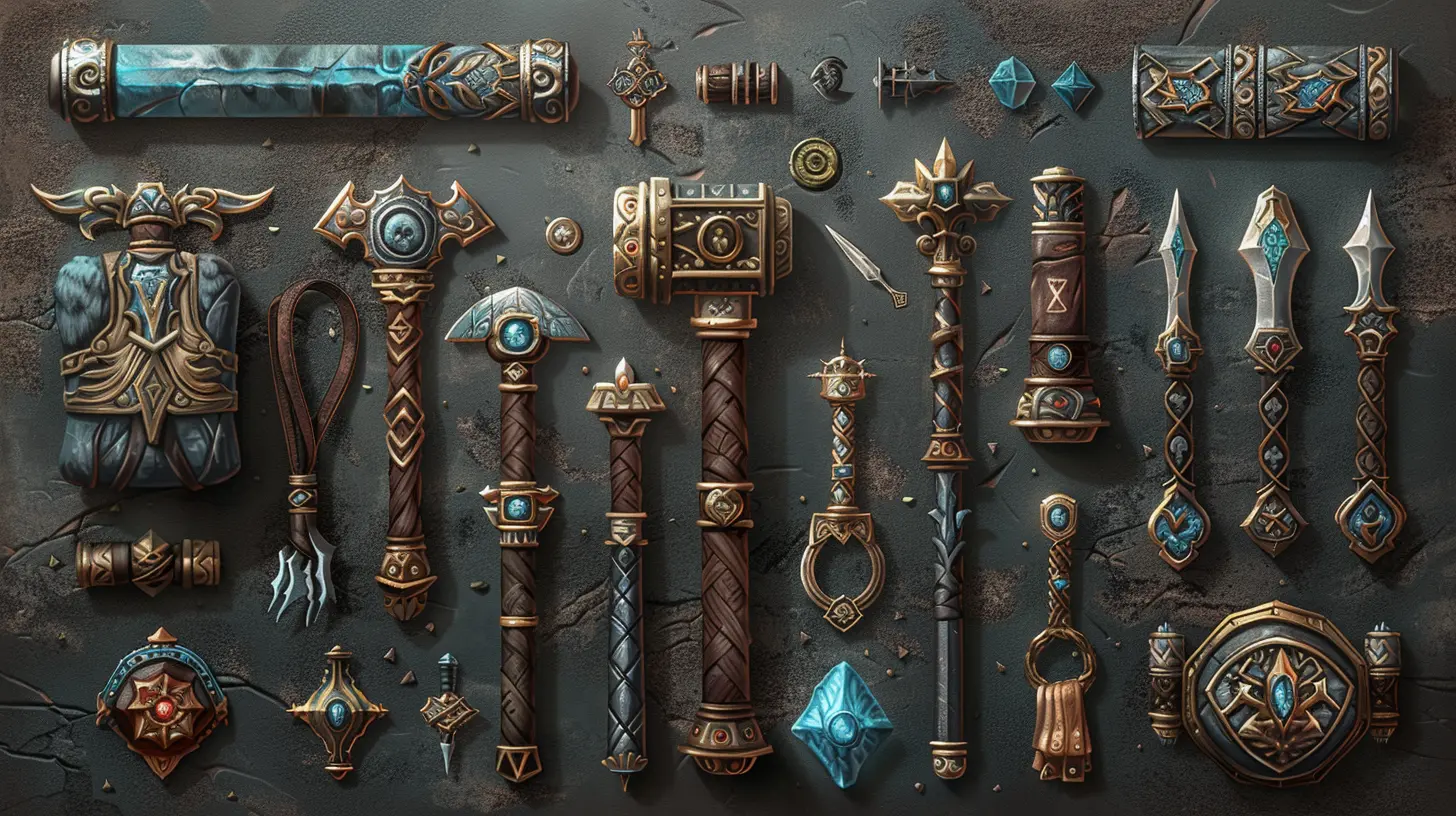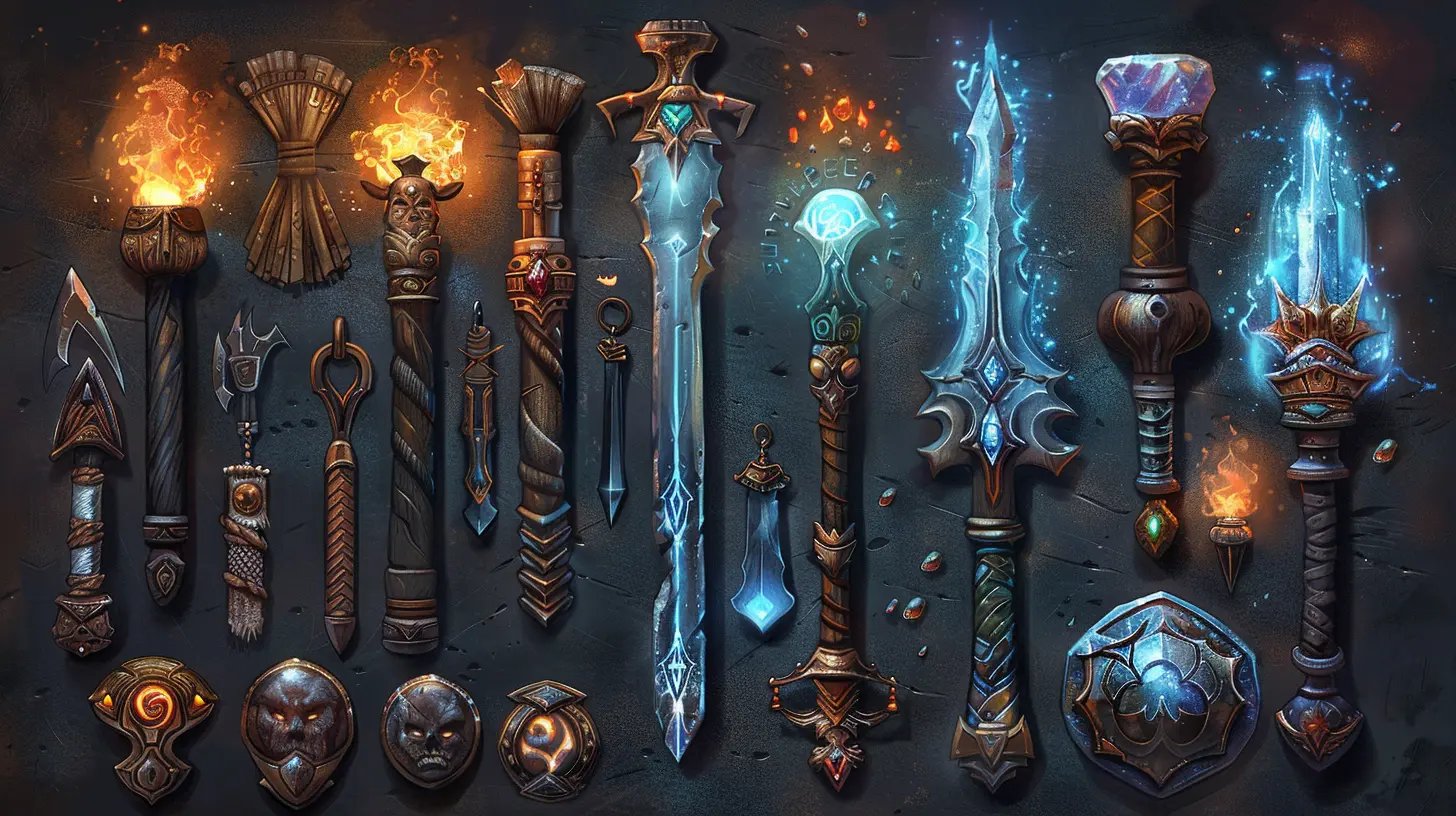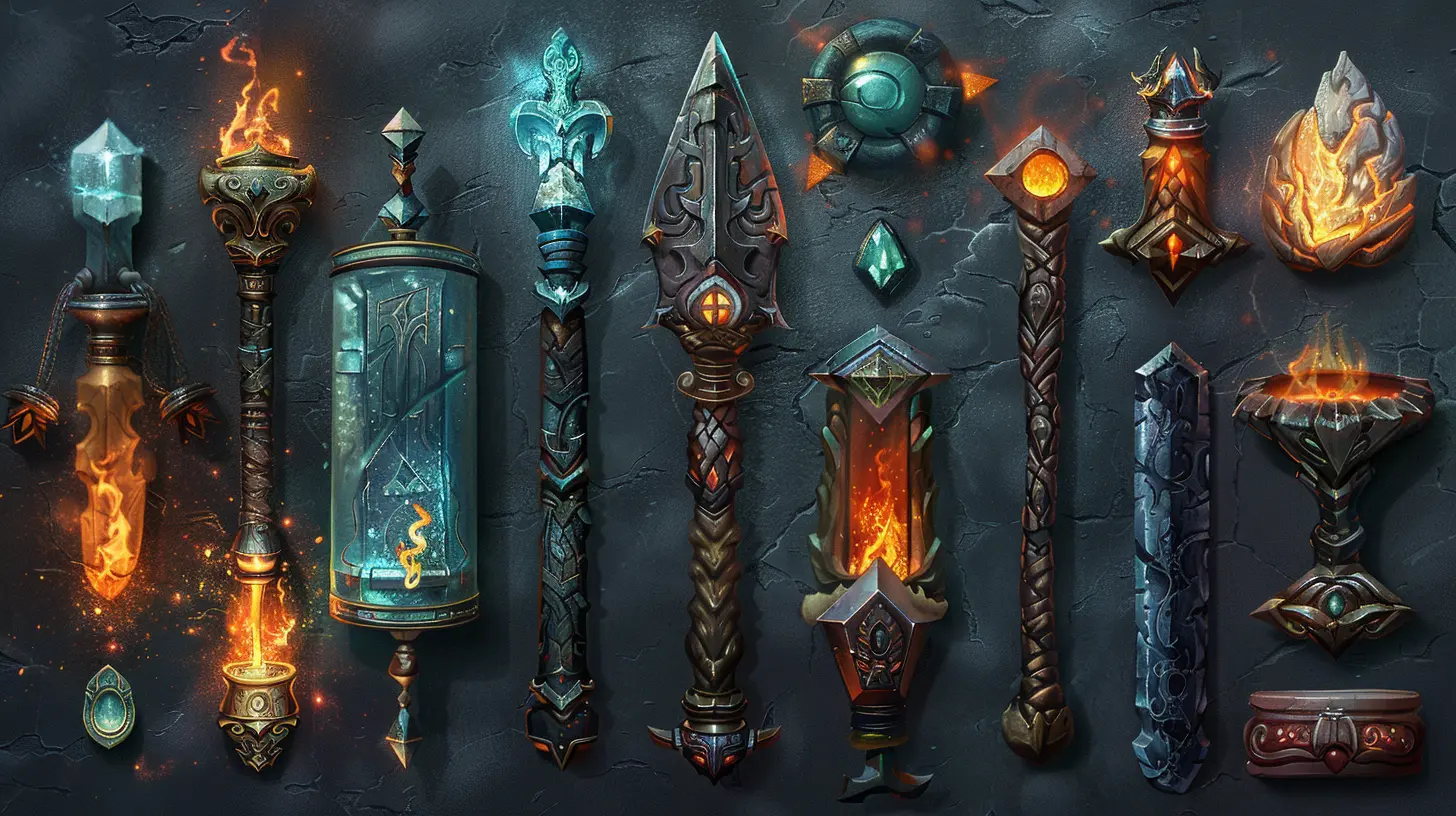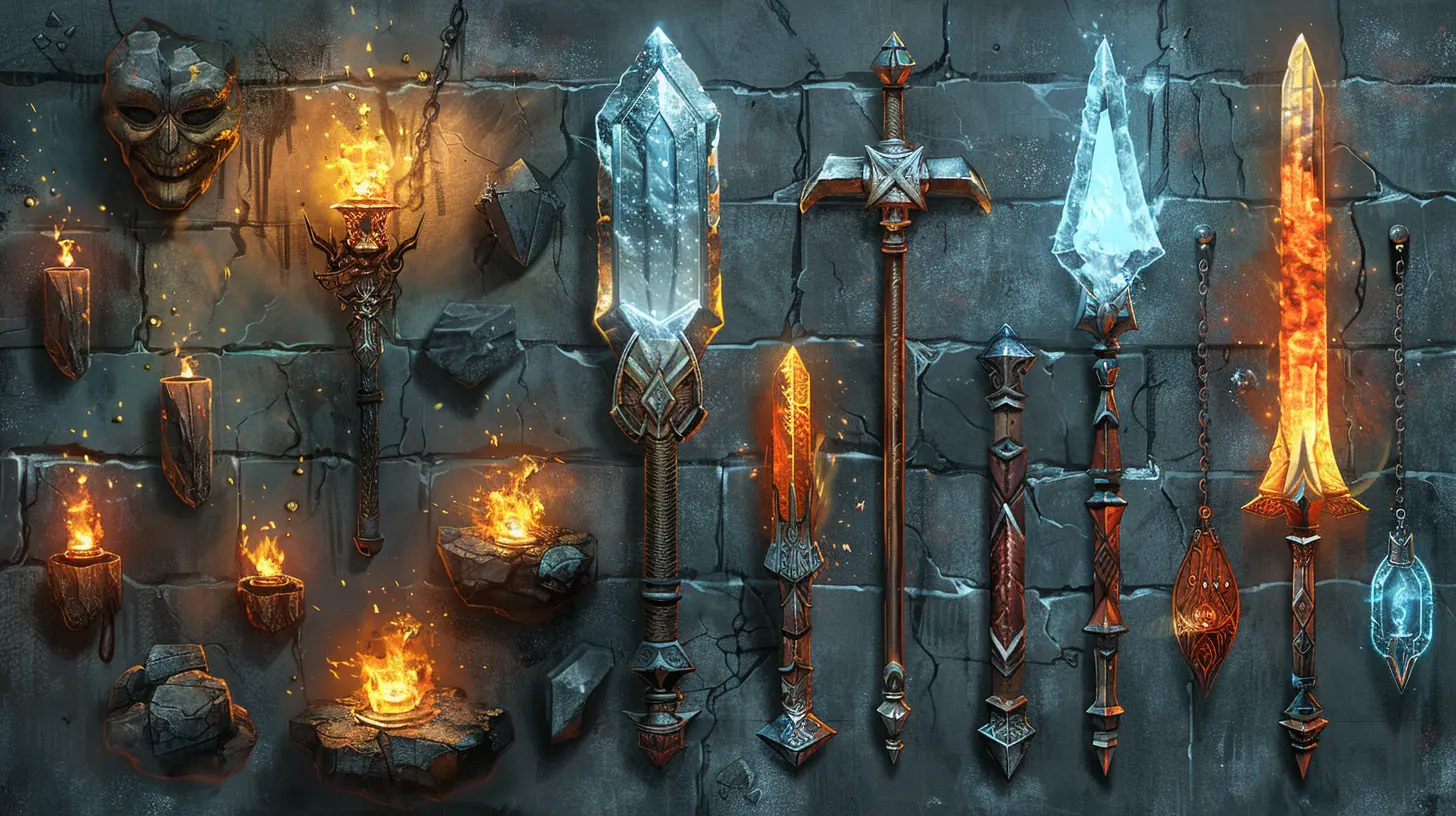The Art of Forging: Legendary Items Crafted from Mythic Materials
31 July 2025
If you've ever played a fantasy RPG or dived into a lore-rich video game world, you've probably drooled over a legendary sword glowing with ancient runes or a mythical armor set that seems almost alive with power. These incredible items aren't just cool—they're a core part of what makes gaming so magical.
But have you ever stopped to think about what makes these legendary items so... legendary? It’s not just their stats or flashy effects. It’s what they’re made of and how they’re forged. The art of crafting legendary gear from rare, mythic materials is a timeless tradition in gaming history—and honestly, it's kind of poetic.
So, grab your virtual hammer, throw on your smithing apron, and let’s talk about the ancient, mysterious, and often emotional world of high-tier item crafting in games.
The Heartbeat of a Hero: Why Legendary Items Matter
Let’s be real—getting your hands on a legendary item hits differently. Whether you earned it after a hundred boss raids or crafted it from the bones of a dragon you hunted over several in-game days, that gear becomes a part of your character’s journey.It’s not just about power. It’s about identity.
Legendary items represent your effort, your choices, your story. And at the very core of each piece? Mythic materials. Stuff so rare, so hard to get, that owning even a single piece feels like a badge of honor.
Beyond Steel and Fire: What Makes a Material Mythic?
Okay, so what exactly are mythic materials?We’re talking about things like:
- Dragonbone – harvested from the ancient remains of fire-breathing titans.
- Starmetal – cosmic iron fallen from the heavens.
- Void Essence – raw, dangerous energy pulled from another dimension.
- Living Wood – enchanted timber from trees older than time itself.
Unlike your everyday iron or leather, these materials have stories. They come with lore, risks, and often emotional weight. They’re not just found—they’re earned.
They’re the difference between a “shiny item” and a “legend in your inventory.”
The Crafting Process: More Than Just Clicking Buttons
In modern games like Monster Hunter, Elden Ring, or World of Warcraft, forging legendary gear isn’t as simple as collecting X items and pressing craft.You often need a recipe—or better yet, a blueprint from a forgotten civilization. You might have to defeat a boss, complete a hidden quest, or make moral choices that affect your character's arc.
The journey becomes personal. The frustration, the triumph, the uncertainty—they all wrap into the final moment when the forge sparks and your mythic item is born.
Honestly, it feels like giving birth to destiny.
Games That Nailed the Art of Forging
Let’s pause and give a nod to some iconic games that really understood the magic of mythic forging:1. Skyrim – The Forge of the Dovahkiin
Who doesn't remember standing at the Skyforge in Whiterun with a fresh stack of Ebony Ingots, making Daedric Armor like a true Dragonborn blacksmith?Add in some Dragonbones and a hint of Daedra hearts, and you're no longer just playing—you’re breathing life into legend.
2. Dark Souls – Soul-Forged Infamy
In Dark Souls, crafting isn't just pulling drops together. You're using the souls of vanquished lords to create weapons that carry the echoes of their original wielders.It’s haunting, beautiful, and incredibly symbolic.
3. The Witcher 3 – Mastercrafted Emotion
Geralt’s gear isn’t just strong—it’s steeped in tradition. Each armor set requires diagrams, rare ingredients, and often a cross-continental trip to find that one elusive component.The payoff? You feel like a true Witcher—not just in stats, but in soul.
Emotional Ties: Why We Get Attached to Crafted Gear
Let’s be honest, we’ve all had that one weapon we refused to sell, even when better stats came along.Why? Because it meant something.
Maybe it was the first legendary you ever crafted. Maybe it got you through a brutal dungeon or PvP battle. Or maybe—it just looked really, really cool.
That emotional attachment is the real magic behind forging. These items embed themselves into our virtual identity.
They’re not just tools—they’re milestones.
Mythic Material Hunting: The Ultimate Side Quest
Here’s where things get juicy (and grindy). To craft legendary items, you first need to gather mythic resources, right?But that’s easier said than done.
Here’s where most games test your mettle:
- Limited Spawns – That dragon that drops Heartscale Ore only shows up once a week.- Rare Drop Rates – You might have to fight the same boss fifty times for one Teardrop of the Moon Goddess.
- Hidden Locations – Some materials are tucked away in forgotten ruins or behind cryptic riddles.
It’s frustrating. It's time-consuming. But it’s also wildly rewarding. When you finally get that last piece? It’s like finishing a marathon with a crown waiting at the end.
The Role of Forging in Multiplayer and MMOs
Forging legendary items in single-player games is emotional—but in MMOs or co-op titles? It’s personal and social.Imagine crafting a guild-only sword from materials collected during a 40-man raid. That gear becomes a symbol of teamwork, loyalty, and shared sweat and tears.
Some MMOs even allow players to name their crafted items. Think about that: Your custom-forged shield might end up in another player’s hands with your name etched into it forever.
Now that’s legacy.
Evolving Systems: How Forging Keeps Getting Better
Game developers are getting smarter with forging systems. We’ve moved beyond basic item combinations to:- Dynamic Crafting Trees – Where your choices mid-crafting affect the final result.
- Customization Options – Change textures, effects, even auras.
- Emotional Resonance Mechanics – Like weapons that grow stronger based on your character’s karma or morality.
In games like Hades or God of War: Ragnarok, your gear sometimes reacts to the storyline. It doesn’t just exist in the game—it exists because of the game.
This blurs the line between gameplay and narrative, making your crafted legendary feel like something truly yours.
The Future of Forging: Where Do We Go From Here?
With AI, procedural generation, and the rise of immersive VR gaming, the future of item forging is insane.Imagine physically forging a sword in VR with haptic feedback, or discovering new materials through AI-generated quests that adapt to your playstyle.
What if your legendary gear evolved with you—gaining new powers as you played, reacting to your decisions, or even forging emotional links with the characters around you?
We’re stepping into a future where crafting legendary items will feel more like shaping your own myth than simply unlocking loot.
Final Thoughts: The Legend Is in the Forge
At its core, forging legendary items from mythic materials isn’t just a game mechanic—it’s a metaphor for growth.It takes time, sacrifice, and a bit of pain. You gather rare, sometimes impossible things. You mix them with fire, willpower, and determination. And what comes out? Something greater than the sum of its parts.
Isn’t that kind of like life?
So the next time you’re standing at a forge in your favorite game, eyeing that glowing sword or epic armor piece, take a moment. Close your eyes. Feel the weight of the story you're shaping—and swing that hammer with purpose.
Because in that moment, you're not just crafting gear.
You're forging legend.
all images in this post were generated using AI tools
Category:
Legendary ItemsAuthor:

Leandro Banks
Discussion
rate this article
2 comments
Lily Lane
Forging legendary items from mythic materials isn’t just about craftsmanship; it's about breathing life into stories and dreams. Each creation embodies the spirit of adventure, reminding us that with passion and skill, we can shape our own destinies!
October 30, 2025 at 3:26 AM

Leandro Banks
Absolutely! Every legendary item carries a narrative, intertwining craftsmanship with the essence of our dreams and adventures. It's a powerful reminder of our potential to shape our destinies.
Bellamy Carey
Unlock your imagination! The journey of forging legendary items reminds us that creativity and persistence can transform the ordinary into the extraordinary. Embrace the challenge, and let your crafting dreams shine brightly!
August 3, 2025 at 3:39 PM

Leandro Banks
Thank you! Indeed, the fusion of creativity and persistence is key in transforming materials into legendary artifacts. Let's keep pushing the boundaries of our craft!


